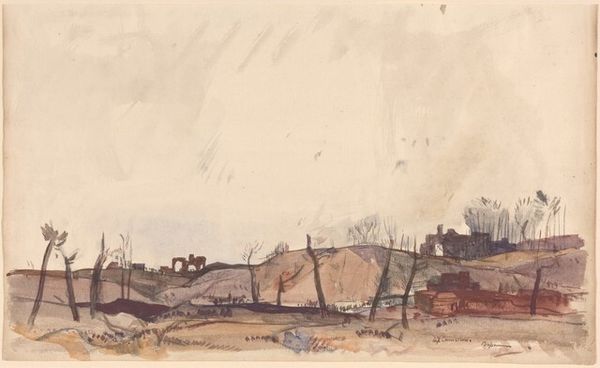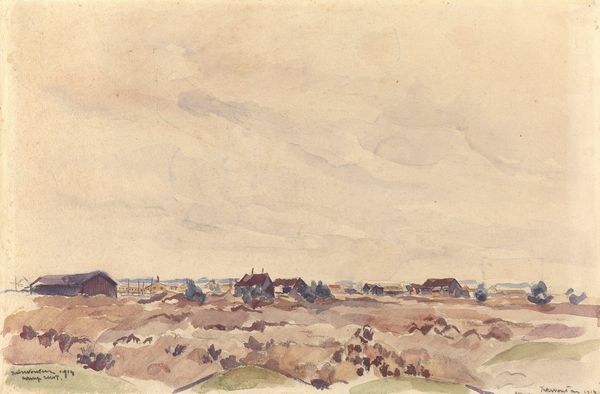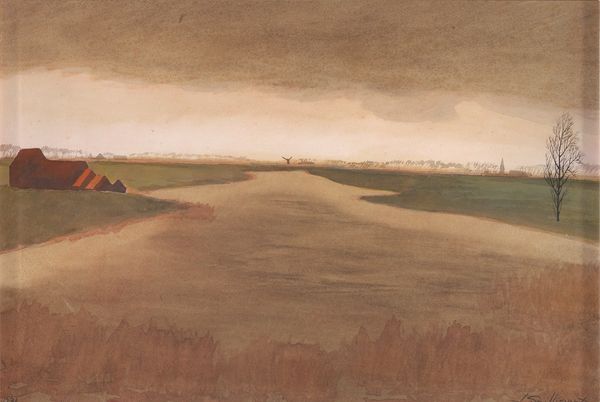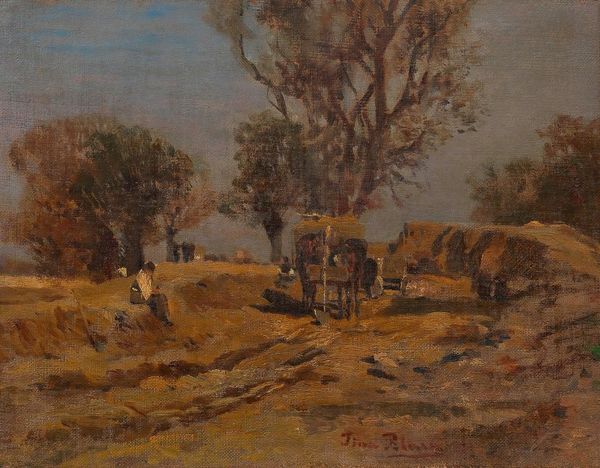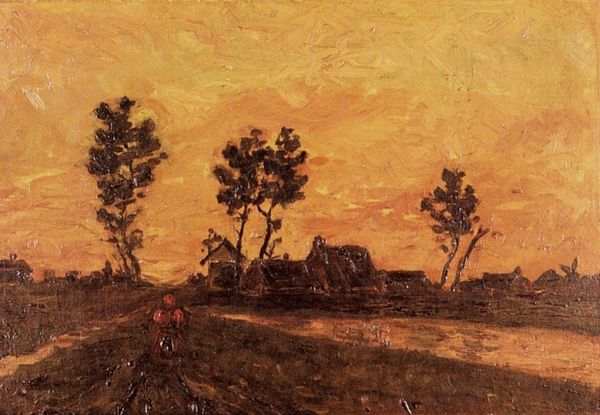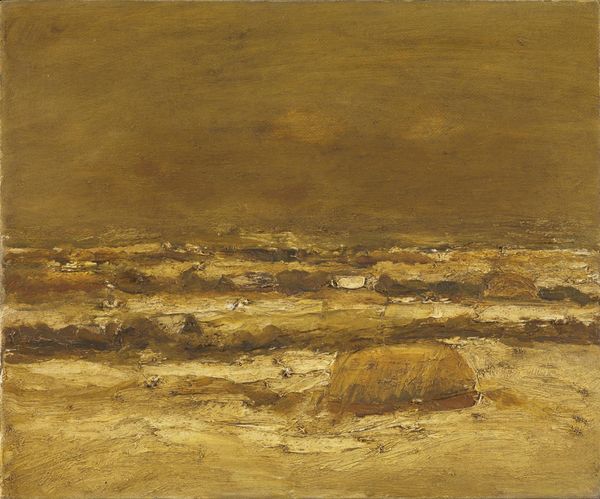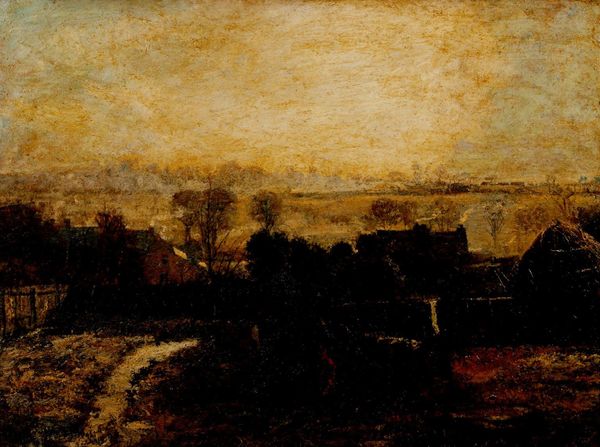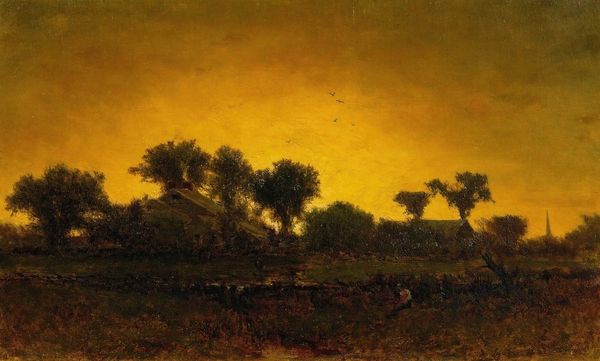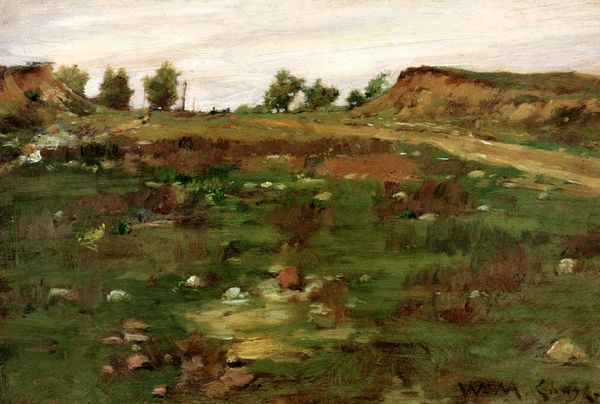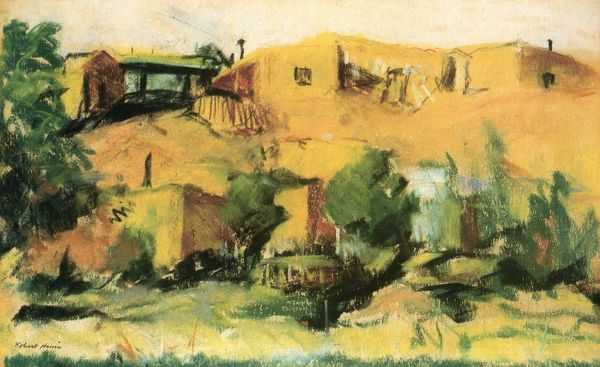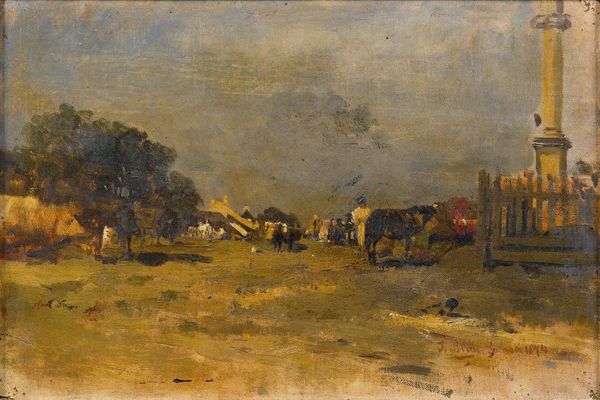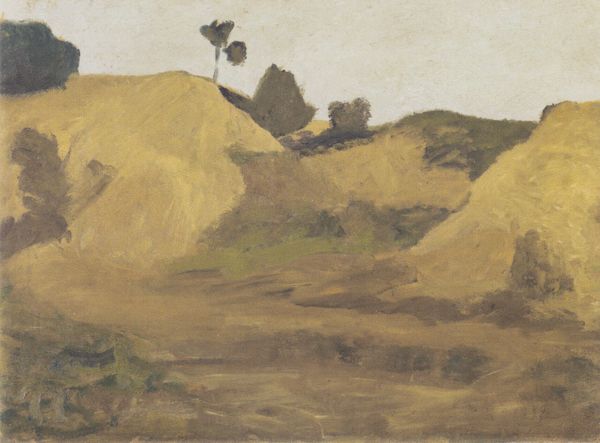
Copyright: Constant Permeke,Fair Use
Editor: This painting, “Harvest” by Constant Permeke, from 1932, uses expressive brushstrokes in oil paint to depict farmers at work. It feels weighty, both in subject matter and the dark earth tones. What draws your eye when you look at this piece? Curator: Immediately, the overwhelming earth tones strike me. Note how Permeke doesn’t just show us farmers working; he saturates the scene in shades of soil, grain, and sweat. These colours operate symbolically; in many cultures, gold is directly connected with not just prosperity but divine favor. Are these people favoured by god through this bountiful harvest or is their back-breaking work stripping away their hope for future generations? Editor: I hadn't considered the golden hue that way, just as an element of the time of day. So, you're saying the colours carry symbolic meaning about hardship and the rewards of hard labour? Curator: Precisely. Think about harvest iconography throughout history: It’s rarely *just* about gathering crops. The figures, though, they aren’t idealized. They appear worn, almost slumped. Does this pose an additional symbolism to their overall exhaustion, or perhaps humility? Editor: They do seem weighed down. So the colour, the figures...it all adds to this sense of the heavy weight of tradition, of both blessing and burden. I guess the symbolism changes as time and cultural values evolve. Curator: Indeed. The “Harvest” becomes a mirror, reflecting not just a scene, but the changing perceptions of work, land, and perhaps our own relationship with both. Editor: I see it now! I never expected to come away rethinking my understanding of such a seemingly simple scene. Thanks so much for unpacking this piece with me!
Comments
No comments
Be the first to comment and join the conversation on the ultimate creative platform.

